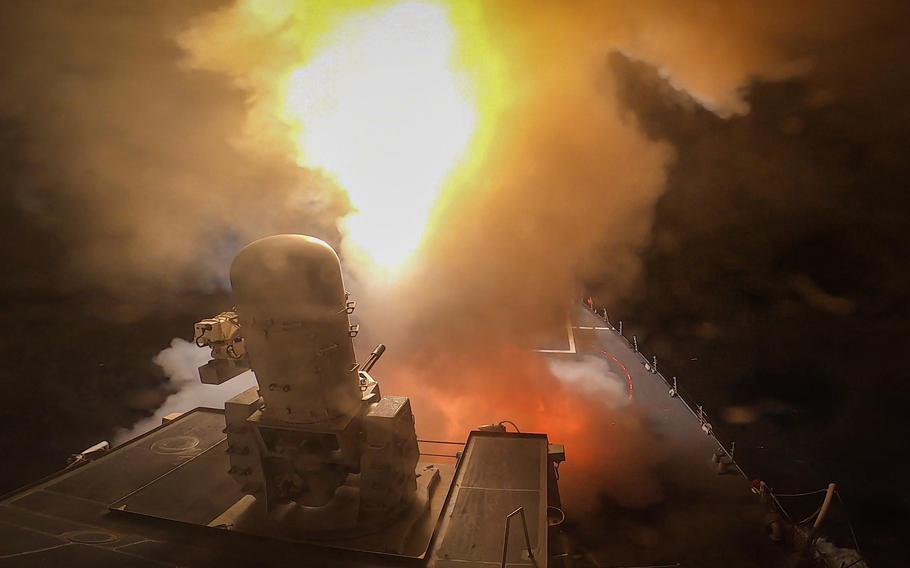
The USS Carney defeats a combination of Houthi missiles and unmanned aerial vehicles in the Red Sea, Oct. 19, 2023. (Aaron Lau/U.S. Navy via TNS)
WASHINGTON (Tribune News Service) — The Pentagon will spend about $1.2 billion to maintain ships deployed as part of operations in the Red Sea and to replenish stocks of missiles fired to repel attacks by Iran and its proxies, according to new budget documents.
The spending, detailed in two Sept. 6 budget documents submitted to congressional defense committees and posted online, helps shine a light on the cost of maintaining a stepped-up presence in the region, as well as shooting down drones and missiles deployed by Iran and one of its proxies, the Houthi rebels in Yemen.
About $190 million will be spent on the restock of the sea-launched RTX Corp. Standard Missile-3 Block 1B and about $8.5 million will go for more heat-seeking air-to-air AIM-X Sidewinder missiles, according to the documents.
The largest chunk of projected Pentagon spending from a year’s worth of Middle East operations is $300 million for unplanned depot maintenance on the USS Bataan amphibious assault ship and ships with the USS Eisenhower Carrier Strike Group that conducted Red Sea operations, the Pentagon said in the documents.
More mundane but important to the U.S. air and naval support is a bill for $16,000 to restock flares to support the self defense operations. Israel’s air defenses — with help from the U.S., the U.K. and others — repelled a barrage of some 300 drones and missiles fired by Iran in April.
The spending is linked to “costs incurred by the DoD within the U.S. Central Command region in responding to the situation in Israel or to hostile actions in the region as a direct result of the situation in Israel,” one of the documents says.
Each advance model Standard Missile-3 Block IB costs between $9 million and $10 million. Two Navy destroyers this week fired about 12 Standard Missiles in defending Israel from another wave of Iranian assaults on Tuesday, according to a Navy official who declined to disclose the exact models and asked not to be identified discussing non-public information. That means this week’s U.S. assistance likely cost about $120 million.
The documents also reveal requests for $276 million to buy additional Standard Missile, SM-6 model weapons as well as by $57.3 million for Tomahawks cruise missiles. Another $6.7 million is earmarked Enhanced Sea Sparrow self-defense missile. All those weapons are made by RTX.
The Pentagon will also spend $25 million for Boeing Co. Jdam-GPS guidance kits and $7.4 million for its Small Diameter Bomb. Another $25 million will go to “increase manufacturing sources” for the Standard Missile to support the Pentagon response to what it calls “the situation in Israel.”
The request includes $26.4 million to replace RTX “Coyote Block 2” drone interceptors “expended since October 2023 in support of DoD’s response to the situation in Israel,” it said. Another $20 million will be spent on additional BAE Systems PLC laser-guided Advance Precision Kill Weapon System rockets.
©2024 Bloomberg L.P.
Visit bloomberg.com.
Distributed by Tribune Content Agency, LLC.